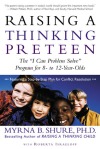
Rebecca Kai Dotlich. A Family Like Yours. Boyd’s Mill Press, 2002. ISBN 978-1563979163 32 pp. $
***
Diversity is the theme of Dotlich’s newest picture book, an illustrated poem titled A Family Like Yours. By using partial rhymes such as dine/time, the rhyme never feels forced, and the text has a steady beat to it without sounding singsongy. The line “There are families whose days may seem perfect to you./And families that have bangs and bumps, and most do,” is a gentle reminder that there is no such thing as a perfect family, and the book ends on a reassuring note the family that fits “is the family like yours.”
Repetition draws the reader in and gives the book rhythm; each page begins “Some families” and goes on to juxtapose some possible activities or behaviors, such as enjoying nature/going to the opera, being messy/neat, or having no children/having many children. These contrasts demonstrate that all families are different and different is okay, a wonderful concept to impart to children. What a shame the illustrator, art director, and editor missed this message in creating the images for this book.
Dotlich’s words provide ample opportunity for picturing non-traditional families: adoptive families, gay/lesbian parented families, foster families, or families where grandparents or relatives care for children. Single parents are pictured a few times, but instead of tackling the diversity theme, Lyon substitutes animal families in several illustrations. Although a few minorities are pictured, most of the illustrations of people feature Caucasians and there are no mixed race families. Another missed opportunity is the portrayal of different cultures: the image of a Russian family in traditional dress is well done, but the Asian family looks like they are wearing bathrobes. The colors are bright and the compositions dynamic, but the images are a bit flat-looking and sometimes too cutesy.
About two-thirds of the way through the book, the art director begins to play with text, putting “bellow” in bold and spacing out the letters of the word “s l o w l y.” The effect is fun and dramatic, but one wonders why she didn’t also slant the word “race” to make it look fast or change the font size for the word “small.” Other problems include the cover image (which is exactly the same as one of the pictures in the book) and a line about families traveling that is illustrated with a spaceship.
This book does fill a gap and has an excellent message. It could be used in the classroom as the starting point for projects on family history, culture, pictures and family trees, but potential purchasers should be aware that the words and images do not quite mesh.









